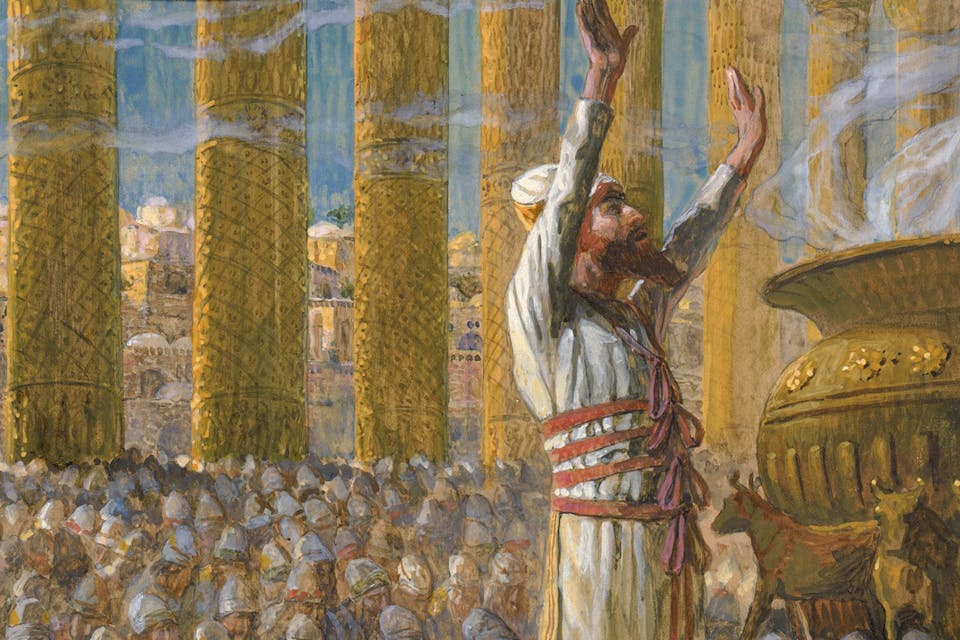
February 11, 2016
The Ominous Undertones in the Bible’s Description of the Temple
Solomon builds it for the Lord, but the Lord is not so impressed.
Last year, writing about the story of Koraḥ’s rebellion against Moses in the book of Numbers, I drew a contrast between the Bible’s treatment of the two contending figures and Shakespeare’s treatment of Bolingbroke and Richard II. In Shakespeare’s play, Bolingbroke’s merits so outweigh Richard’s that he successfully displaces the king to become Henry IV.
We take you now to a later stage in that story. Bolingbroke, dying, is trying to pass the kingdom on to his son, whom, in the person of Henry V, Shakespeare will portray as the very model of chivalric kingship. He has some good news, some bad news, and some paternal advice:
God knows, my son,
By what by-paths and indirect crook’d ways
I met this crown; and I myself know well
How troublesome it sat upon my head:
To thee it shall descend with better quiet,
Better opinion, better confirmation;
For all the soil of the achievement goes
With me into the earth. . . .* * * *
Yet, though thou stand’st more sure than I could do,
Thou art not firm enough, since griefs are green;
And all my friends, which thou must make thy friends,
Have but their stings and teeth newly ta’en out;
By whose fell working I was first advanc’d,
And by whose power I well might lodge a fear
To be again displac’d.* * * *
. . . Therefore, my Harry,
Be it thy course to busy giddy minds
With foreign quarrels, that action, hence borne out,
May waste the memory of the former days.